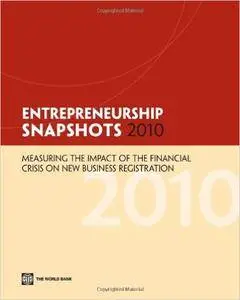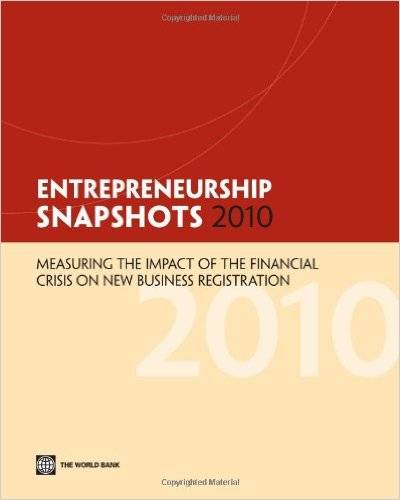Entrepreneurship Snapshots 2010: Measuring the Impact of the Financial Crisis on New Business Registration by World Bank
English | Nov. 18, 2010 | ISBN: 0821384767 | 44 Pages | PDF | 4 MB
English | Nov. 18, 2010 | ISBN: 0821384767 | 44 Pages | PDF | 4 MB
The 2010 World Bank Entrepreneurship Snapshots (WBGES) provide a unique indicator of business creation around the world and facilitate the investigation of the factors that foster dynamic private sector growth. Now in its fourth year, the WBGES measure entrepreneurial activity in 115 developing and industrial countries over the six year period 2004-2009. Importantly, the data offer a distinctive and timely snapshot of the impact of the 2008-2009 financial crisis on entrepreneurial activity.
There is wide variation in new business creation across countries: On average, about four new firms register every year for every 1,000 working age individuals in industrialized countries, while there is less than one new firm registered in low and low middle income countries. The data show that dynamic business creation occurs in countries that provide entrepreneurs with good governance, a strong legal and regulatory environment, and reduced red tape. The data also show that nearly all countries experienced a sharp drop in business entry during the crisis. However, industrialized countries experienced the crisis more quickly and more severely than other income groups. In addition, the degree to which the crisis impacted new firm creation is correlated with measures of crisis severity. Finally, we find that countries in which financial markets play a larger role in the domestic economy experienced sharper declines in new business registrations as a result of the crisis that paralyzed financial markets. These results can guide effective policymaking and deliver new capabilities for identifying the impact of reforms.



